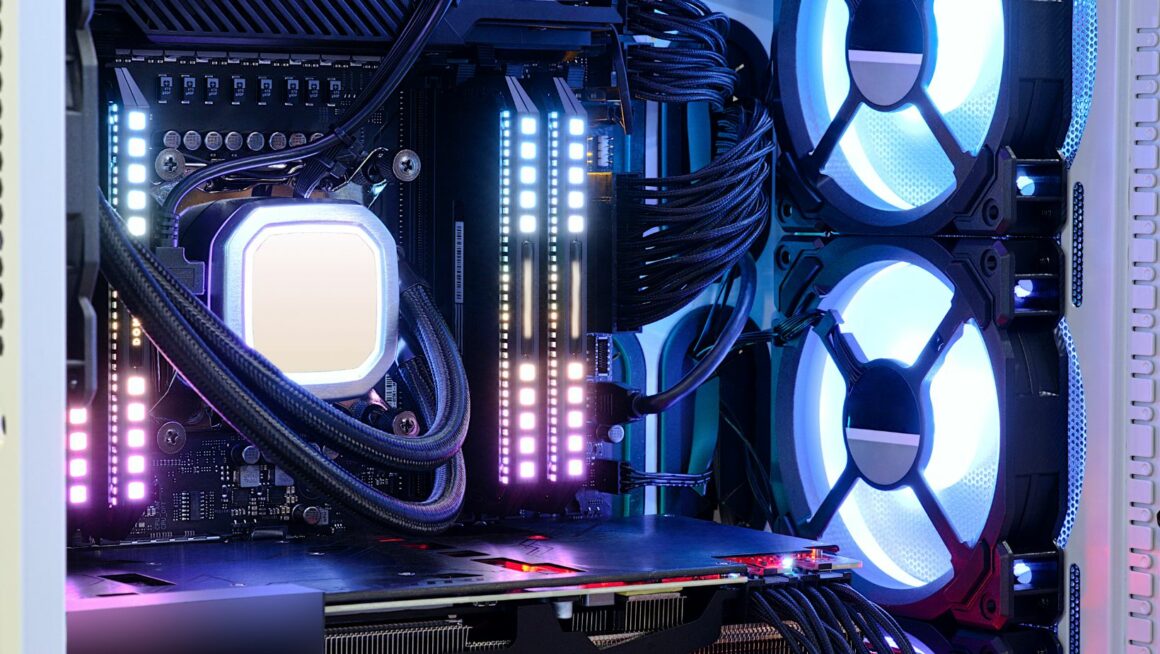In the world of custom PC builds, size does matter. For enthusiasts and professional builders alike, a large PC case isn’t just about making a statement; it’s about unlocking a world of possibilities. From enhanced airflow and cooling solutions to ample space for high-end components and intricate cable management, the benefits of opting for a larger chassis are manifold.
Large PC Case
Benefits of Extra Space
A large PC case presents numerous advantages, especially when building a system intended for high performance or extensive workloads. The increased interior space significantly enhances component compatibility, allowing users to install larger motherboards, graphics cards, and multiple storage drives without spatial constraints. This flexibility ensures that builders are not limited by the physical dimensions of their components, making future upgrades more feasible and less restrictive.
Moreover, having extra space within a PC case simplifies cable management, contributing to a cleaner and more organized setup. Effective cable management not only improves the aesthetics of a build but also promotes better airflow by reducing obstructions. As a result, components receive more efficient cooling, which can lead to enhanced performance and longevity.
Cooling Solutions and Airflow Efficiency
In the context of a large PC case, cooling solutions and airflow efficiency are paramount factors that benefit significantly from the additional space provided. These cases accommodate multiple cooling options, including larger air coolers, more extensive and numerous fans, and sophisticated liquid cooling systems. The ability to install high-performance cooling solutions ensures that heat generated by powerful processors and graphics cards is efficiently dissipated, maintaining optimal operating temperatures even under heavy loads.
Furthermore, the strategic placement of fans in a large case helps establish effective airflow patterns that move hot air away from heat-sensitive components and draw in cooler air from outside the case. This continuous flow of air contributes to preventing overheating and potential thermal throttling, ensuring stable performance during intensive computing tasks. Enhanced airflow efficiency in a large PC case also provides a quieter computing experience, as fans can operate at lower speeds while still achieving effective cooling.
Top Features to Look for in a Large PC Case
Spacious Interior for High-End Components
One of the primary advantages of a large PC case is its spacious interior. This space is crucial for fitting high-end components such as oversized graphics cards, multiple storage drives, and extended ATX motherboards. A large case ensures there’s ample room for future upgrades, allowing users to easily add or replace components without spatial constraints. Moreover, this space facilitates better airflow around components, significantly reducing the risk of overheating.
Easy Cable Management and Accessibility
Cable management is another critical feature offered by large PC cases. Neat cable management not only improves airflow but also enhances the visual appeal of the build. Large cases typically feature grommeted holes and dedicated cable routing channels that make it easier to hide and organize cables. Additionally, these cases provide better accessibility to components, thanks to their multiple entry points, removable panels, and tool-less design in some models. This accessibility is especially beneficial during the installation process and when performing maintenance or upgrades.
When choosing a large PC case, it’s essential to consider the spacious interior, advanced cooling system compatibility, and ease of cable management and accessibility.
How to Maximize the Potential of Your Large PC Case
Maximizing the potential of a large PC case involves strategic use of its space and features. Firstly, optimizing airflow with additional fans ensures efficient cooling, particularly for high-end components that generate substantial heat. Incorporating a custom water cooling loop, if supported, can further enhance thermal management, taking full advantage of the spacious interior. Secondly, leveraging the ample space for organized cable management not only improves airflow but also maintains a cleaner aesthetic. Utilizing modular drive bays enables customization for storage needs, allowing for an optimal setup. Lastly, installing sound dampening materials can reduce noise, making the large PC case not just a powerhouse but a silent one. These steps ensure that the large PC case’s capabilities are fully utilized, resulting in improved performance, aesthetics, and longevity.

